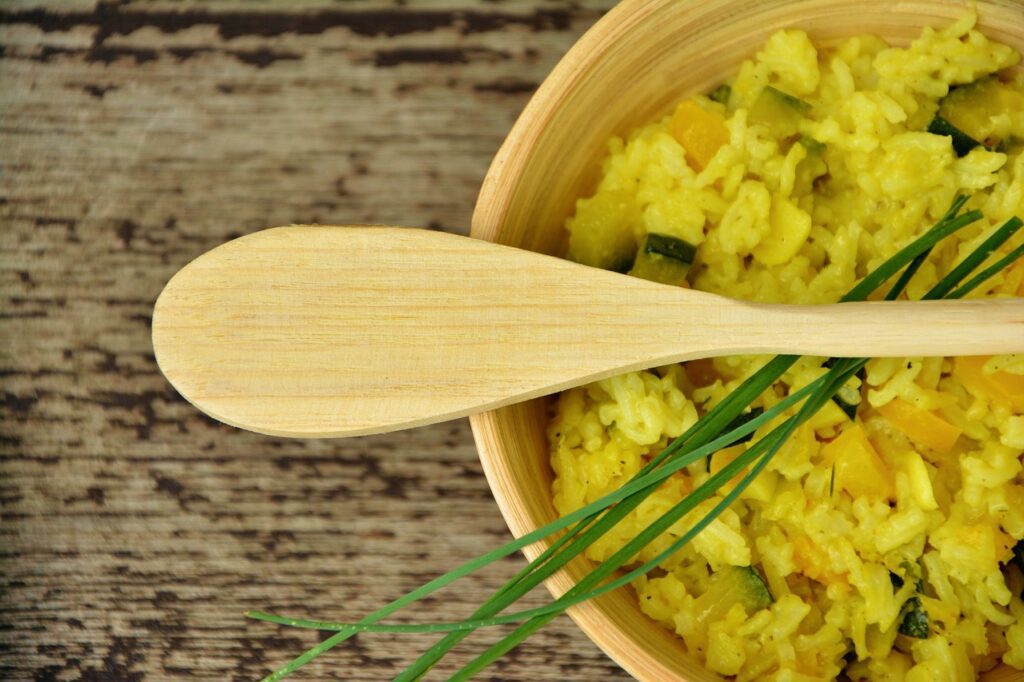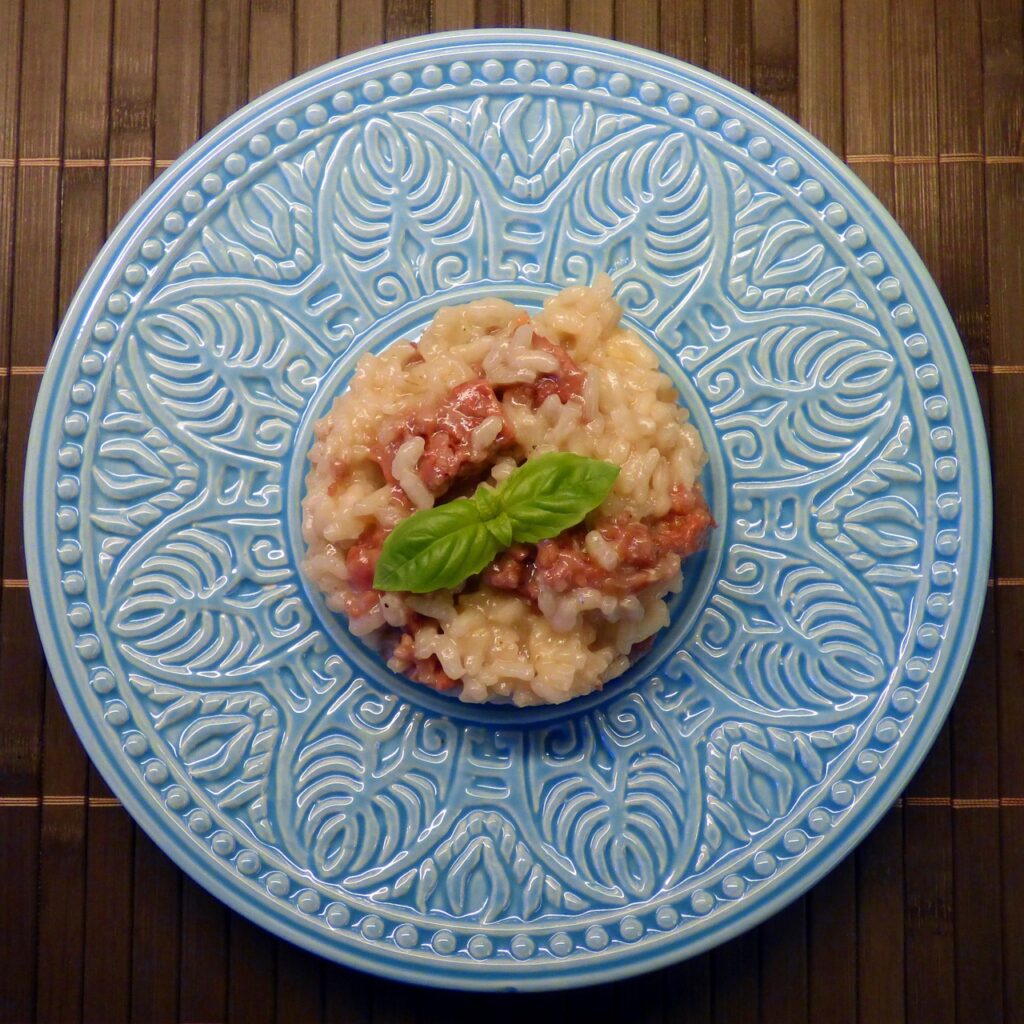Rice’s Intriguing Journey to Italy
Rice’s entrance into Italy is shrouded in mystery. Historians believe it made its debut in the 14th century, likely from Spain. Once it anchored itself onto Italian shores, it quickly became an integral part of the Italian culinary tapestry, especially in regions outside Milan. These regions, with their ideal mix of flat terrain, water, and ambient humidity, turned rice cultivation into a thriving activity. Thus, from the 14th century, rice began its journey to solidify its status as a staple in Italian cuisine.
Risotto: From a Joke to a Delicacy
Risotto, the creamy rice dish we all adore, has its roots in a whimsical tale. Legend traces its origins to 1574, during the staining of the glass used in the iconic Duomo di Milano. A young apprentice, while working on the cathedral, became the brunt of jokes because his staining resembled the effects of saffron on pigments. To retort at the relentless teasing during his master’s wedding, he mischievously added saffron to the wedding rice. However, the tables turned: instead of eliciting laughter, it earned admiration. The saffron-infused rice became an instant hit, evolving into the risotto we cherish in Italian cuisine.

Crafting the Perfect Risotto: Four Key Elements
- Soffritto: The foundation of flavor, it usually consists of a medley of vegetables, butter, oil, and onions, sautéed in the very pan in which the risotto will come to life.
- Broth: The lifeline of risotto, this can range from homemade concoctions to canned broths, flavored with beef, chicken, vegetables, or fish.
- Flavor Anchors: This defines the risotto’s character – from the earthiness of truffles, the vibrancy of vegetables, the heartiness of meats, to the iconic saffron that started it all.
- The Right Rice: Central to risotto, Italian rice boasts large, starchy grains. Ideal for risotto, this rice variant can absorb a copious amount of liquid, maintaining its firmness.
Mastering the Risotto at Home: Essential Tips
- Preserve the Starch: Resist the temptation to wash the rice. The starch is essential to achieve that creamy consistency.
- Choose Wisely: Not all rice grains are made equal for risotto. Ensure you pick the right variant, as specified in traditional Italian recipes or cookbooks.
- Opt for a Double-Bottom Sauté Pan: This ensures even heat distribution, allowing the rice to cook uniformly.
- Toasting is Vital: Before the broth finds its way in, ensure the rice is toasted just right. It’s the cornerstone of an authentic risotto, setting the stage for its creamy goodness.
Embrace these pointers, and you’ll soon be whipping up risottos that would make an Italian nonna nod in approval.

